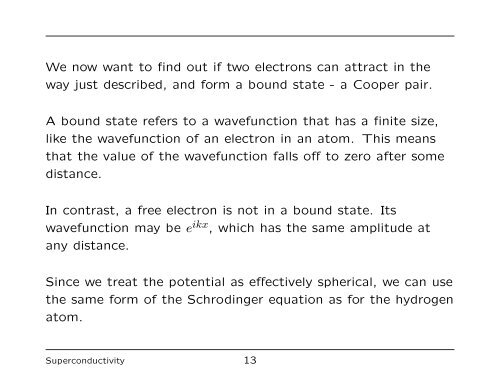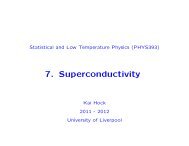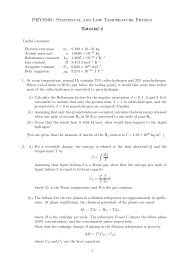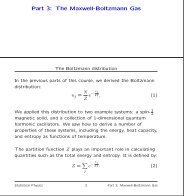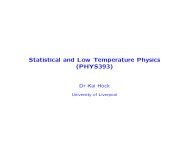The Nature of the Cooper Pair - University of Liverpool
The Nature of the Cooper Pair - University of Liverpool
The Nature of the Cooper Pair - University of Liverpool
You also want an ePaper? Increase the reach of your titles
YUMPU automatically turns print PDFs into web optimized ePapers that Google loves.
We now want to find out if two electrons can attract in <strong>the</strong><br />
way just described, and form a bound state - a <strong>Cooper</strong> pair.<br />
A bound state refers to a wavefunction that has a finite size,<br />
like <strong>the</strong> wavefunction <strong>of</strong> an electron in an atom. This means<br />
that <strong>the</strong> value <strong>of</strong> <strong>the</strong> wavefunction falls <strong>of</strong>f to zero after some<br />
distance.<br />
In contrast, a free electron is not in a bound state. Its<br />
wavefunction may be e ikx , which has <strong>the</strong> same amplitude at<br />
any distance.<br />
Since we treat <strong>the</strong> potential as effectively spherical, we can use<br />
<strong>the</strong> same form <strong>of</strong> <strong>the</strong> Schrodinger equation as for <strong>the</strong> hydrogen<br />
atom.<br />
Superconductivity 13


